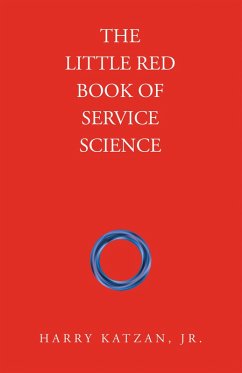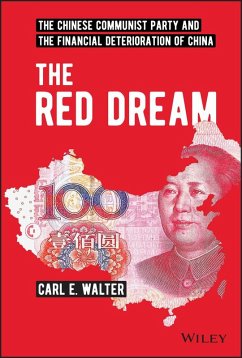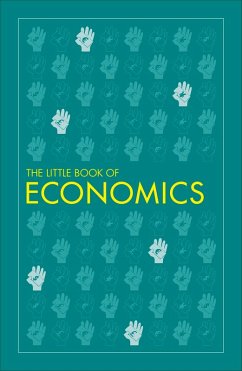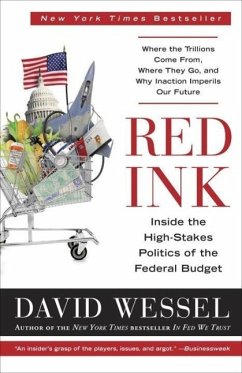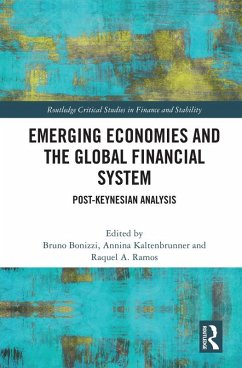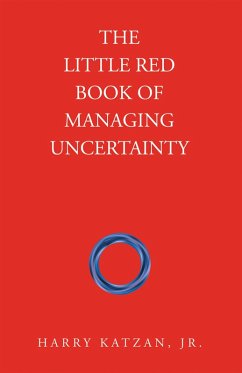
The Little Red Book of Managing Uncertainty (eBook, ePUB)

PAYBACK Punkte
1 °P sammeln!
This litle book is an easy-to-read collection of chapters written by the author on the subject of Managing Uncertainty. Some chapters have been written to suit a general audience, and others have been prepared for a select class of readers with specific problems. There is some mathematics involved with some topics, but it is very general in nature. No specific math background is required at all. Uncertainty, covered later in the book, deals mainly in situations where the problem definition is not known or the result is not known or understood. Here are a couple of examples. In the first case,...
This litle book is an easy-to-read collection of chapters written by the author on the subject of Managing Uncertainty. Some chapters have been written to suit a general audience, and others have been prepared for a select class of readers with specific problems. There is some mathematics involved with some topics, but it is very general in nature. No specific math background is required at all.
Uncertainty, covered later in the book, deals mainly in situations where the problem definition is not known or the result is not known or understood. Here are a couple of examples. In the first case, a good engineering student is going into his or her senior year with all A's and no B's, C's, or anything lower. The student has two options. His advisor tells him he can get a Master's degree in engineering in one year. On the other hand, he can go into industry with a good paying job. The probably that he would achieve his Master's is practically 1.0, given his record. The student may not be so fortunate with the job. He might not like his work assignment, the company atmosphere, his manager, or the living environment. A lower probably is expected, ranging from 0.5 to 0.75. If the student is risk averse, he should take the Master's. Otherwise the job might be appropriate.
Another example might involve a soldier in a desert situation of some sort. The solder is manning an artillery device in the desert and spots a cloud of dust in the distance. The question is: Is it a bunch of wild camels, or an enemy force moving across the desert. Before firing or not firing, the solder asks his sergeant who responds that the cloud is causes by a bunch of camels, a bunch of desert residents, or an enemy force with probabilities (0.70, 0.25, 0.05) respectively. Not satisfied, he asks his commanding officer who responds with (0.90, 0.10, 0.00). The soldier has a decision and askes a CIA officer accompanying the group. Using Dempster's Rule of combination, the officer comes up with (0.72, 0.28, 0.00), yielding the following assessment:
Camels - 0.72 (72%)
Residents - 0.28 (28%)
Enemy force - 0.00 (0%)
As simple as it seems, calculations, such as these, is the basis of understanding uncertainty. This book contains introductory material on understanding uncertainty, relevant mathematical background, and useful examples.
The reader can use the material in the book in several ways. The first part is an easy to read description of uncertainty with common everyday examples. It requires no specific background in math but involves careful study. The third part gives six useful applications of the underlying concepts.
The appendix gives an introductory section on Dempster-Shafer theory.
Uncertainty, covered later in the book, deals mainly in situations where the problem definition is not known or the result is not known or understood. Here are a couple of examples. In the first case, a good engineering student is going into his or her senior year with all A's and no B's, C's, or anything lower. The student has two options. His advisor tells him he can get a Master's degree in engineering in one year. On the other hand, he can go into industry with a good paying job. The probably that he would achieve his Master's is practically 1.0, given his record. The student may not be so fortunate with the job. He might not like his work assignment, the company atmosphere, his manager, or the living environment. A lower probably is expected, ranging from 0.5 to 0.75. If the student is risk averse, he should take the Master's. Otherwise the job might be appropriate.
Another example might involve a soldier in a desert situation of some sort. The solder is manning an artillery device in the desert and spots a cloud of dust in the distance. The question is: Is it a bunch of wild camels, or an enemy force moving across the desert. Before firing or not firing, the solder asks his sergeant who responds that the cloud is causes by a bunch of camels, a bunch of desert residents, or an enemy force with probabilities (0.70, 0.25, 0.05) respectively. Not satisfied, he asks his commanding officer who responds with (0.90, 0.10, 0.00). The soldier has a decision and askes a CIA officer accompanying the group. Using Dempster's Rule of combination, the officer comes up with (0.72, 0.28, 0.00), yielding the following assessment:
Camels - 0.72 (72%)
Residents - 0.28 (28%)
Enemy force - 0.00 (0%)
As simple as it seems, calculations, such as these, is the basis of understanding uncertainty. This book contains introductory material on understanding uncertainty, relevant mathematical background, and useful examples.
The reader can use the material in the book in several ways. The first part is an easy to read description of uncertainty with common everyday examples. It requires no specific background in math but involves careful study. The third part gives six useful applications of the underlying concepts.
The appendix gives an introductory section on Dempster-Shafer theory.
Dieser Download kann aus rechtlichen Gründen nur mit Rechnungsadresse in A, D ausgeliefert werden.




